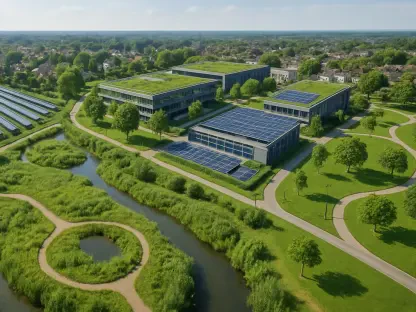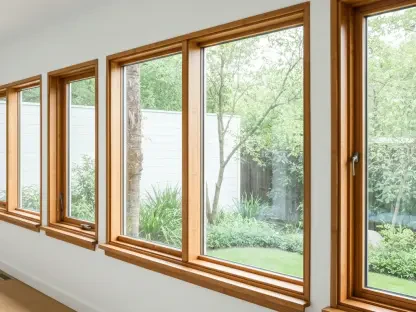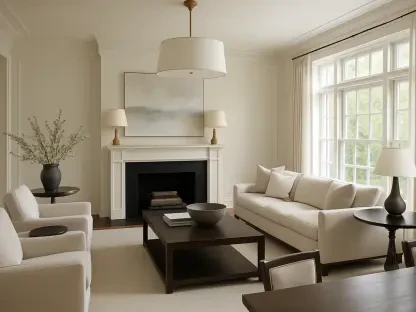In the ever-evolving landscape of interior design, the pressing challenge for businesses lies in balancing aesthetic innovation with environmental responsibility, especially as client expectations for sustainable practices continue to soar. With the global push toward net-zero goals and heightened scrutiny on material sourcing, design firms face mounting pressure to deliver spaces that are not only visually striking but also ecologically sound. This demand creates a critical need for tools and frameworks that can seamlessly integrate sustainability into every stage of the design process without compromising on creativity or efficiency.
This editorial dives into the transformative potential of the Sustainable Adaptive Material Performance Level (SAMPL™) model, a pioneering framework designed to address these complex challenges head-on. By prioritizing adaptability, occupant well-being, and environmental health, SAMPL™ offers a strategic pathway for B2B professionals in the design and architecture sectors to redefine their approach. The discussion will explore how this model, supported by cutting-edge technology, empowers firms to make informed material choices and create future-ready environments. For decision-makers, understanding this framework is not just about keeping pace with trends—it’s about positioning their businesses as leaders in a market increasingly defined by sustainability mandates and client-driven accountability.
The insights provided here aim to equip industry leaders with actionable knowledge, focusing on outcomes that enhance both project impact and firm reputation. This is a moment to rethink traditional design paradigms and embrace a solution that aligns with long-term business and planetary goals.
Harnessing SAMPL™ for Strategic Design Innovation
For interior design firms navigating the complexities of sustainability, SAMPL™ emerges as a game-changer by providing a structured approach to material selection and project execution that directly addresses environmental and operational challenges. Unlike conventional methods that often treat sustainability as an afterthought, this model embeds eco-conscious principles from the outset. It enables designers to evaluate materials based on performance metrics that prioritize durability, recyclability, and low environmental impact, ensuring that every choice contributes to a regenerative built environment. This strategic focus helps firms meet stringent green building standards while maintaining client satisfaction.
A key strength of SAMPL™ lies in its AI-powered Material Intelligence Dashboard, which serves as a decision-making ally for professionals under tight deadlines. This platform delivers real-time insights into material options, offering data on lifecycle impacts, sourcing transparency, and compatibility with project goals. Imagine a hospitality project where a designer must balance luxury finishes with LEED certification requirements—the dashboard streamlines this process by suggesting alternatives that reduce carbon footprints without sacrificing aesthetic appeal. Such technology translates into measurable outcomes, like reduced project waste and enhanced compliance with sustainability certifications, directly impacting a firm’s bottom line and market positioning.
Beyond individual projects, SAMPL™ fosters a broader cultural shift within design organizations by aligning teams around shared sustainability objectives. Industry trends indicate that over 60% of commercial clients now prioritize eco-friendly spaces, according to recent studies by green building councils. By adopting this model, firms can not only respond to such demands but also differentiate themselves in a competitive landscape. The result is a dual benefit: strengthened client trust through verifiable environmental commitments and an elevated brand reputation that attracts forward-thinking partners and projects.
Conclusion
Reflecting on the exploration of SAMPL™, it becomes evident that this framework marks a pivotal shift in how interior design firms tackle sustainability challenges in their projects. Its integration of adaptive material strategies and advanced technological tools provides a robust foundation for creating spaces that are both innovative and responsible.
Looking ahead, the implications for B2B professionals are clear—adopting such models can position firms at the forefront of an industry increasingly driven by environmental accountability. The next step involves evaluating internal workflows to integrate similar frameworks, ensuring that sustainability becomes a core driver of design decisions. This approach promises not only to meet current client expectations but also to anticipate future demands in a rapidly changing market.









